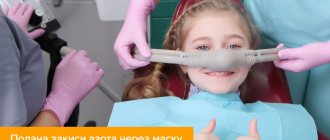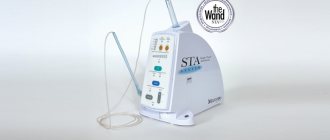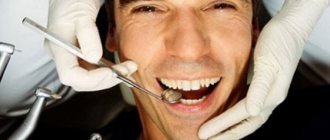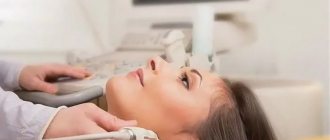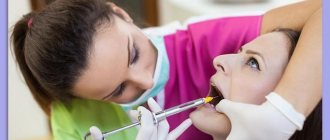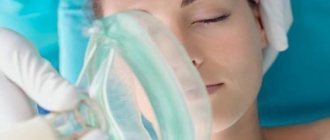How is nitrous oxide used in dentistry?
Nitrous oxide, or laughing gas, as it is popularly called, was invented at the end of the 18th century by physicist John Priestley. For a long time, the invention could not be used: the gas with a pronounced sweetish taste was absolutely useless at first glance, but had a number of interesting properties. After inhalation, the person became cheerful, relaxed and experienced a feeling similar to intoxication. As usually happens, fans of this gas, or rather, its effects, quickly appeared. Nitrous oxide was used by clowns and circus performers to further excite and make the audience laugh. Over time, another interesting property was discovered: while under the influence of laughing gas, people did not seem to feel pain and treated it quite calmly. Dentist Horace Wells was the first to use nitrous oxide in dental treatment. Despite the fact that the first experiments gave positive results, public experiments were unsuccessful, and in one case the patient almost died. His colleague Wells Morton was more successful in using nitrous oxide, so he is considered a pioneer in this field. Of course, in the past, the gas formula and dosage were far from perfect, so treatment with nitrous oxide was not so predictable. In its modern version, sedation with nitrous oxide has been carried out since the late 40s. It was then that doctors began adding oxygen to the mixture and using special devices, including cylinders, a rotameter and a mask.
Technology of low-flow gas anesthesia
Aspects of low-flow anesthesia have been actively discussed by specialists over the past decades. Interest in this problem has resurfaced due to the development of new technologies. The attention of researchers is also attracted by such factors of low-flow anesthesia as cost-effectiveness, physiology and environmental friendliness.
Recently, very effective vapor anesthetics have begun to be used in medicine: desflurane, isoflurane, sevoflurane, ethrane. Xenon (medical) also appeared, a gaseous anesthetic of the latest generation. In this regard, the use of high-flow anesthesia, which has traditionally been used in medical practice, has become impractical.
Nevertheless, the widespread introduction of low-flow anesthesia in Russian clinics is complicated by the lack of modern anesthesia and respiratory equipment. As it turned out, our country does not produce anesthesia machines that could ensure the implementation of anesthesiological procedures with a minimum gas flow. To be fair, it is worth noting that imported anesthesia equipment cannot provide anesthesia using xenon.
According to statistics, more than 3 million anesthesia procedures are performed in Russian medical institutions per year, most of which are performed using high-flow technologies, which is extremely wasteful both economically and environmentally inappropriate. Moreover, this method inherently contradicts human physiology. In addition, most Russian anesthesiologists do not know the basics of low-flow anesthesia.
Rice. 1 Anesthetic workstation Aisуs CS2
A little history
Attempts to use a completely closed circuit during anesthesia were made by doctors a long time ago, when anesthesia machines were far from perfect. But doctors were able to fully appreciate the advantages of the low-flow method only in the 70s of the last century, with the advent of more advanced anesthesia equipment and technical means that allowed intraoperative monitoring of the concentration of vapor and gas anesthetics.
In our country, closed-circuit gas anesthesia was first used by T. M. Darbinyan, performing heart surgery on children, but the method became more widely used years later, in the late 90s, and only in those clinics that had anesthesia-respiratory facilities systems of foreign production.
Minimum flow xenon anesthesia first entered domestic practice in 1992. It was used in the S.P. Botkin City Clinical Hospital by doctors N.E. Burov and D.A. Dzhabarov. The use of xenon has shown the inadequacy of domestic anesthesia units, adapted exclusively to high-flow anesthesia. Until 2003, there were no certified anesthesia machines suitable for using xenon in Russia at all. And only towards the end of 2003 such equipment began to be used.
With the advent of isoflurane, snevoflurane, desflurane and other halogen-containing anesthetics, low-flow anesthesia using devices, usually foreign-made, began to be introduced in Russia, although not very actively. But there was still no certified xenon equipment among them. Recently, anesthesia machines designed for closed-circuit anesthesia based on 4 liquid and 2 gas anesthetics have appeared in domestic medicine and are being successfully used.
Serial production of such anesthesia-respiratory units in Russia will significantly reduce the technical gap with developed foreign countries in the field of anesthesia.
Types of breathing circuit
Based on the decision of the International Commission for Standardization, the breathing circuit can be reversible or non-reversible. Based on its functional features, it can be:
- open;
- half open;
- half-closed;
- closed.
Experts classify the reversible circuit as: semi-closed, pendulum and completely closed, and the non-reversible circuit as open and half-open.
The circulation system is considered the most optimal for low-flow anesthesia in children and adults. Its variety is determined by the amount of fresh gas flow. If the gas flow is higher than the metabolic demand for oxygen and the absorption rate of other gas anesthetics, then the anesthesia system operates in a closed circuit. If the flow of the fresh gas mixture is more than 1.5 times higher than the MBL value, then the circulation system operates in a semi-open circuit, which prevents the accumulation of carbon dioxide even in the absence of an adsorber.
The amount of gas flow determines the following types of anesthesia:
- high-flow, with a gas flow of more than 6 liters per minute;
- medium-flow, with a gas flow of more than 3 liters per minute;
- low-flow, with a gas flow of more than 1 liter per minute;
- minimal, with a gas flow of less than 1 liter per minute.
Anesthesia can be performed in a closed circuit if the fresh gas flow and gas uptake are equal.
Pharmacokinetics of gases
Nitrous oxide is not metabolized in the human body. From the moment it enters the circuit, it is absorbed by tissues within 20 minutes. As the tissues become saturated with nitrous oxide, its further absorption decreases and stops at the level of a flat curve. The absorption of nitrous oxide by tissues is calculated using a special formula.
Xenon has a lower solubility coefficient than nitrous oxide, so it is absorbed by tissues three times less. The human body consists of heterogeneous tissues, and their solubility coefficients are different, so it is quite difficult to accurately calculate the volume of soluble xenon. For example, a patient has 10 kg of adipose tissue. Up to 1700 ml of xenon can additionally dissolve in it, the total volume of gas in this case will be 8400 ml. It is estimated that to achieve a xenon concentration of up to 70%, an 80 kg patient would require approximately 8400 ml of xenon. Then the level of anesthesia will dynamically stabilize. This volume of anesthetic will be sufficient to maintain the surgical stage of anesthesia in a closed circuit for 2–3 hours. In this case, the tightness of the circuit should not be compromised. The absence of an open wound surface is also important. A situation is created that is unique in its essence, when the anesthetic that enters the patient’s body is retained in it at a stable narcotic concentration and participates in repeated recirculation in a closed circuit.
Xenon elimination occurs quite quickly. After just 5 minutes, up to 95% of all xenon dissolved in the body is released through the patient’s lungs. The patient awakens 2–3 minutes after the supply of gas anesthetic is stopped.
It is important to note that the pharmacokinetics of xenon during low-flow anesthesia requires further study and clarification, based on the characteristics of organs and tissues. Their pronounced, medium and low perfusion, different degrees of gas solubility in tissues, the speed of elimination of the anesthetic and the period of its post-anesthesia action should be taken into account.
Features of low-flow gas anesthesia
At the end of the usual premedication and intubation, denitrogenation is performed with pure oxygen, the total volume of which is 50–60 l, the concentration of alveolar nitrogen is reduced to 0.5%. After denitrogenation, the oxygen gas flow is set at the rate of 4 ml per kilogram of the patient’s body weight. The anesthetic gas flow (nitrous oxide or xenon) is calculated at a fourfold increase in relation to the oxygen gas flow.
After 15 minutes, the nitrous oxide level will be 65–70%, and a persistent narcotic concentration of this anesthetic will occur. With xenon anesthesia, a stable narcotic concentration of this substance is achieved much faster. This will take about 5 minutes.
Having reached a stable narcotic concentration of the anesthetic, the gas flow is adjusted to minimum flows under the control of the fractional concentration of oxygen in the inhaled gas mixture. Its level should not be lower than 30%. The minimum gas current is maintained throughout the entire period of anesthesia. 15–30 minutes before the end of the surgical intervention, the xenon supply is stopped, but a ventilator is connected via a closed circuit. After the operation, xenon is removed from the patient’s body using pure oxygen, which is supplied by a gas flow of 3–4 liters per minute. Exhaled xenon enters a special adsorbing unit, where it is utilized. After 2–3 minutes have passed after completion of the xenon supply, the patient regains consciousness. Low-flow xenon anesthesia is tens of times cheaper than medium-flow anesthesia.
Technical requirements for anesthesia equipment
Based on the design features, there are two types of respirators that are part of inhalation-type anesthesia devices:
- with continuous gas supply;
- with intermittent gas supply.
It is worth noting that many models of imported anesthesia equipment are not able to provide low-flow anesthesia if the total flow decreases to the level of 500 ml per minute. This is due to the fact that during the expiration period, if there is a lack of gas-narcotic mixture, ambient air is sucked into the breathing circuit. This creates a threat of dangerous gas anesthesia.
The requirements of the International Standards Commission reflect that when using respirators, it is necessary to adjust the total gas flow. Anesthesia using xenon becomes more expensive, since a large volume of gas is used. For this reason, an anesthesia-respiratory unit that provides for the supply of gas to the breathing circuit during the expiratory phase of the respiratory cycle will be more economically profitable.
Indications for treatment under ZAX
One of the main advantages of nitrous oxide is its safety: the gas is eliminated from the body in the shortest possible time and in an unchanged state. To recover from the state of sedation, no special antidotes are required, which is very important when treating children’s teeth. After 10–15 minutes, the little patient returns to his normal life and does not feel any side effects. Dental treatment with nitrous oxide for children is carried out very often and has a number of indications.
- Fear of the dentist. Any treatment under sedation can reduce fear of the doctor. Few children are not nervous before the appointment, so sedation is an ideal procedure for relieving stress.
- Preschool age. At a very young age, the use of potent drugs and tranquilizers is prohibited or not recommended. In this regard, nitrous oxide is a better solution.
- Pronounced gag reflex. Laughing gas not only does not provoke, but even suppresses the gag reflex.
Experts recommend using nitrous oxide in dentistry for children for no more than 1 hour. During this time, a fairly large number of manipulations can be performed, including treating pulpitis or periodontitis. If longer or complex treatment is required, then it is better to split it into several stages.
Contraindications
Today, nitrous oxide is used almost everywhere, and reviews of the procedure are mostly positive. This was largely because the use of this gas does not require a special license, which is required for other types of sedation using psychotropic substances. Because of this, ZAKS is sometimes taken quite lightly. Meanwhile, this procedure has an impressive number of contraindications and restrictions that must be kept in mind to avoid complications and side effects:
- the age of the patients is too young—ZAKS is not recommended for children under three years of age;
- upper respiratory tract diseases (colds, runny nose, rhinitis, sinusitis);
- adenoids;
- otitis in the acute stage;
- traumatic brain injuries (3 months or earlier before the start of treatment);
- seizures and epilepsy;
- lack of possibility of contact with a doctor - when performing ZAKS, the doctor must understand the child’s condition and reaction;
- individual manifestations of the reaction (convulsions, allergies, reverse reactions).
Side effects of ZAX are usually associated with the individual reaction of the child’s body to the components of the mixture. It happens that instead of a relaxed and calm state, we get the opposite reaction: hyperactivity, sudden movements, panic states. In this case, the gas supply should be stopped immediately, as there is a high risk of harming the child and only increasing his fear of dental treatment. If allergic reactions occur (shortness of breath, cough, redness), the doctor should also interrupt the procedure and give the patient antihistamines.
Dental treatment in children with nitrous oxide: how does it work?
As already mentioned, the use of nitrous oxide occurs almost everywhere. Although the procedure is relatively simple, it should only be performed by a licensed anesthesiologist. In addition, if the clinic offers sedation services, there should also be a resuscitator on duty who can provide first aid if the need arises. The procedure begins with preparation. 10 hours before sedation you need to stop eating and come to the clinic on an empty stomach. If the child is small, then preparation for sedation is done in a playful way so as not to frighten or embarrass him. The process of sedation with nitrous oxide begins by first delivering 100% oxygen at a certain rate. Then nitrous oxide is added: its concentration ranges from 30 to 50%. Then the doctor administers local anesthesia, since the ZAX is designed to calm the child and remove stress, and pain relief is carried out separately. During the treatment process, the doctor communicates with the child, monitors his condition and, if necessary, asks him to take certain actions. After the manipulations are completed, the supply of nitrous oxide stops, and after 10–15 minutes the gas completely leaves the body.
Medical Internet conferences
Goal: to study the possibilities of new methods of anesthesia in dentistry
Objectives: 1. Study the history of the emergence of dentistry as an independent branch of medicine 2. Study the problems of the need to treat primary teeth 3. Study modern methods of sedation 4. Study the indications for the use of nitrous oxide in pediatric dentistry 5. Study the contraindications for the use of nitrous oxide in pediatric dentistry.
As a separate independent discipline, dentistry was formed not so long ago - at the beginning of the 20th century. This happened due to the merger of such areas of medicine as dental and maxillofacial surgery. However, the history of dentistry goes back to the Ancient World, when the first attempts were made to treat dental diseases. In Russia, dentistry developed in the era of Peter the Great, who gained a lot of new knowledge while traveling through European countries and brought from abroad a variety of devices for dental treatment. Although the first school of dentists in St. Petersburg opened only in 1881. And just a few years later, several hundred qualified dentists graduated from it.
In the 20th century, dentistry, having formed into a separate science, began to develop by leaps and bounds. As a result, today there are many durable and aesthetic materials, and doctors are able to restore almost any defect in hard tissues or dentition. Orthodontics today can correct almost any malocclusion. The development of local anesthesia and the introduction of new strong anesthetics have made almost all manipulations painless, which greatly facilitates treatment. Bad teeth occur not only in adults, but also in children. Therefore, pediatric dentistry is one of the most relevant areas of modern dentistry.
Some parents believe that there is no need to worry about diseases of children's baby teeth. After all, baby teeth will fall out anyway and be replaced by permanent teeth, and you shouldn’t bother with them. It's a delusion. Bad baby teeth will certainly lead to problems with permanent teeth. If the question arises - to treat a diseased tooth or remove it, the answer is clear - treat. Early removal of baby teeth should be carried out only in extreme cases, as this leads to a number of serious problems. First of all, it causes difficulty in the eruption of the main tooth. There is a violation of the development of bite, diction, and facial skeleton, and cosmetic defects are formed. It is very important to prevent destructive processes and, if necessary, remove foci of infection from the oral cavity. The presence of a huge amount of putrefactive and other pathogenic bacteria in a child’s mouth reduces immunity and increases the risk of many diseases. And vice versa, if a child has healthy teeth, he is less likely to catch all kinds of acute respiratory infections, and the risk of gastrointestinal diseases is reduced. Therefore, it is so important to monitor the condition of your child’s teeth. But it is not so easy to bring a child to an appointment with a dentist and persuade him to allow the doctor to do all the necessary manipulations, especially if the child has already had a negative experience, and in such cases modern methods widely used in dentistry come to the rescue.
With the advent of modern sedation technology, dentists can provide their patients with truly stress-free treatment.
In the West, nitrous oxide is most often used in pediatric dentistry - oxygen sedation (NAS). Nitrous oxide is an inert gas with a subtle sweetish odor; when mixed with oxygen, it provides the safest and most harmless sedation for the patient. ZAX has been regularly used in dentistry since 1948, and currently, in 80% of cases in children, this type of sedation is used.
Nitrous oxide is supplied using special equipment. The device is a rotameter that allows you to adjust the ratio of gases in the mixture, a reserve bag, a breathing circuit with a nasal mask and a source of gases (cylinders or a centralized system). The gases exhaled by the patient are evacuated by high-speed suction.
Indications for the use of ZAX in pediatric practice are:
· The need to relieve moderate fear of dental surgery in a child who is capable of cooperation. Usually these are children over 3 years old.
· First treatment at the dentist, which allows you to form a stereotype of a non-scary treatment.
· Increased gag reflex.
· Traumatic interventions (local anesthesia, removal, preparation of carious cavity).
· Long-term treatment.
Contraindications to ZAX are:
· The child has a strong fear after a negative experience of treatment at the dentist and reluctance to contact the doctor.
· The child is too young when he is not ready to cooperate.
· Mental illnesses and intellectual disabilities that impede the ability to come to an agreement with the child.
· Impaired nasal breathing (adenoids, ARVI). The child will breathe through the mouth and will not be able to use the nasal mask.
· Full stomach, as nausea and vomiting may occur. The last meal should be taken 2 hours before the start of sedation.
· Hyperexcitability, since there is a possibility of a paradoxical reaction to sedation.
Having some experience, the doctor, analyzing the child’s behavior during the consultation, can predict what impact the ZAX will have on the patient. It is important to remember that successful use of ZAX is only possible in combination with the use of behavior management techniques. Trying on a mask takes place in a playful way. The doctor explains to the child in an accessible form what will happen to him. It is important to obtain the patient’s voluntary consent to wear a mask: this is the first component of success. In children's practice, scented masks and masks of various colors are used, which makes the choice and the procedure itself more pleasant.
Introduction to a state of sedation begins with the supply of 100% oxygen at a rate of 4-6 l/min, with the gradual addition of nitrous oxide. The permissible concentration of nitrous oxide is 50%. The most optimal ratio at which the planned treatment can be carried out is 30% nitrous oxide and 70% oxygen. However, adjusting the concentration of nitrous oxide depends on the effect, and in each case this is an individual indicator that is recorded in the map. After the start of inhalation, the blood is saturated with gas within 5-7 minutes. The difference between ZAX and other sedative drugs is the rapid onset of sedation and the absence of a trace effect; nitrous oxide is completely eliminated from the body within 5-10 minutes of inhalation.
For the most unpleasant and painful procedures, such as tooth extraction, with a diagnosis of periodontitis, it is possible to temporarily increase the concentration of nitrous oxide up to 50%. Nitrous oxide has an analgesic effect and potentiates the action of local anesthetics. Even if the child is scared or feels discomfort, after the end of the manipulation he quickly calms down and gives the opportunity to calmly continue the treatment. The use of ZAXS allows for complex and fairly long-term treatment. For example, treatment of pulpitis followed by restoration with composite materials or standard crowns in one visit. Completion of work must be carried out on traces of nitrous oxide. The exit from the state of sedation should be smooth and ends with inhalation of 100% oxygen for 5-10 minutes. At this time, the doctor can communicate with the child, reinforcing his positive impressions of visiting the clinic. The effect of ZAX is due to nonspecific depression of the central nervous system.
Comfortable, relaxed state; pleasant mood; soft, relaxed, inhibited body movements; lack of resistance; deep breathing; decreased motor activity of the eyes, easily fixed gaze; decreased perception of sound are all symptoms of sedation. The patient may be disoriented and easily suggestible. The use of ZAX significantly facilitates the treatment process for both the child and the dentist. Children develop a positive attitude towards dental visits, which instills in them a culture of dental health. New prospects open up for the pediatric dentist to provide higher-quality, more extensive, smoother treatment!
Today, 103 dental clinics are registered in Saratov, 12 of them provide children's services. The Praktik dental clinic uses nitrous oxide.
Conclusion: nitrous oxide is one of the most current methods of sedation, helping to make the procedure easier for both the doctor and the patient. This method of anesthesia is common in the USA, Canada, in the West, in the Central cities of Russia, and in Saratov, unfortunately, it is used only in one clinic.
